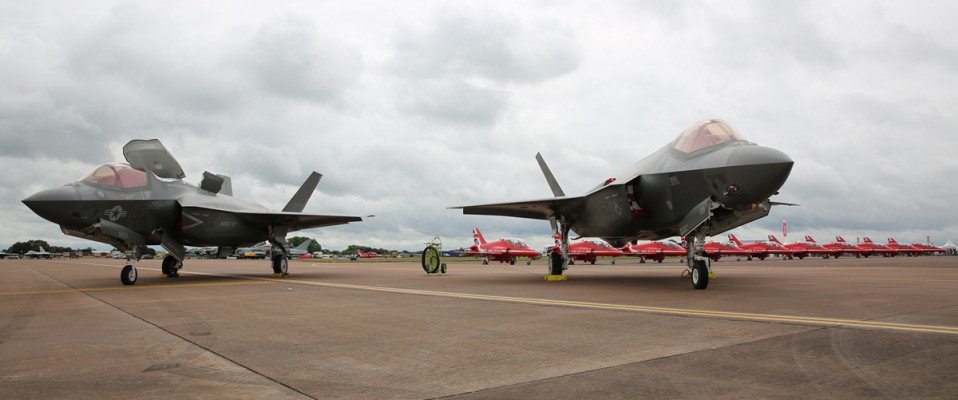RIAT 2016 – The F-35B crosses the Pond!
Report and Photos by Gabriele Rivera
The Royal International Air Tattoo is an event that everyone interested in aviation should have attended at least once in a lifetime. For the very few who know little or nothing about it, let’s say that this year’s edition marks its 45th anniversary; the airshow traces its origins back to 1971, when a modest event was held at North Weald Airfield. The idea behind the airshow was to raise fund in support of the Royal Air Forces Association, a charity supporting RAF families. In the following years the organization grew, and RAFCTE (RAF Charity Trust Enterprises) stepped in, assuming the huge task of managing an airshow which swiftly became the greatest one in the world; the event changed location, moving to RAF Greenham Common for almost ten years and eventually establishing its base in RAF Fairford, Gloucestershire, in 1985.
The word International really has a reason to appear in the event’s name; every year Fairford hosts guests from all over the world. RIAT 2016 has lived up to such tradition, being Croatian acrobatic team “Krila Oluje” the 56th country to take part to the airshow rooster of participating countries. Most of the aircraft present at the airshow come from Europe, but visitors every year have a chance to take photos of planes coming from other continents; this year such participants came from Australia, New Zealand, Canada, Japan, Pakistan, Oman, Jordan and, of course, USA.
The long-awaited debut of F-35 has eventually become reality; as most of us remember, the Lightning II had been announced to land in UK in 2014 but, after an F-35A’s engine took fire at Eglin a few weeks before RIAT started, the Pond crossing was canceled. Last year the tight test schedule left no hope to have any ship available to be shown at Fairford, but luckily this year was the right one. The Italian Air Force received attention last winter for being the absolute first ferrying an F-35A from Italy to USA, while the Royal Dutch Air Force managed to perform the same enterprise on the opposite route in May. The British airshows (RIAT first and then Farnborough International Airshow) were the reason for a joint UK-USA F-35B three-ship flight to make history redeploying from MCAS Beaufort, South Carolina, to United Kingdom for a mission scheduled to last more than three weeks. Moreover the three “B” models were accompanied by three USAF F-35A from Luke AFB, and if the presence of such six planes wasn’t enough, after an 8-years long absence, also two F-22A were of the party.
Needless to say, the American aircraft stole the scene; on Friday morning (July 8th) the RIAT public has been treated with a demo air refueling performed by a KC-130J and an F-35B, both courtesy of the USMC. But to witness the first vertical landing a few hours still missed; before there was an impressive demo of a 94th Fighter Squadron F-22A, based at Langley, after which a Luke AFB Heritage flight team F-35A joined the Raptor to perform several passes, during which everybody could compare size and overall design of the two airplanes. After several other display, the long-awaited moment arrived: the RAF F-35B took the air and performed a formation fly-by with the Red Arrows and two RAF Typhoons, then it was her turn to show her capabilities, hovering on the display line centerpoint and then executing the very first public display of a vertical landing, placing the carriage on the special aluminium pad installed by the Marines engineers. You can bet that everyone attending at this historic event will remember it for a long time!
This extraordinary exhibition (except for the air refueling demo) has been repeated during the weekend; on Saturday the vertical landing has been performed from an USMC F-35B, while the widely announced Heritage Flight that should have seen the two 5th generation aircraft fly along with a P-51 Mustang has been possible only on Sunday (due to the weather conditions) and without the Raptor, precautionary landed for a technical glitch. This slight inconvenience has not hampered the F-22A in bringing back home the ‘As the Crow Flies’ Trophy’, voted from the Friends of RIAT.
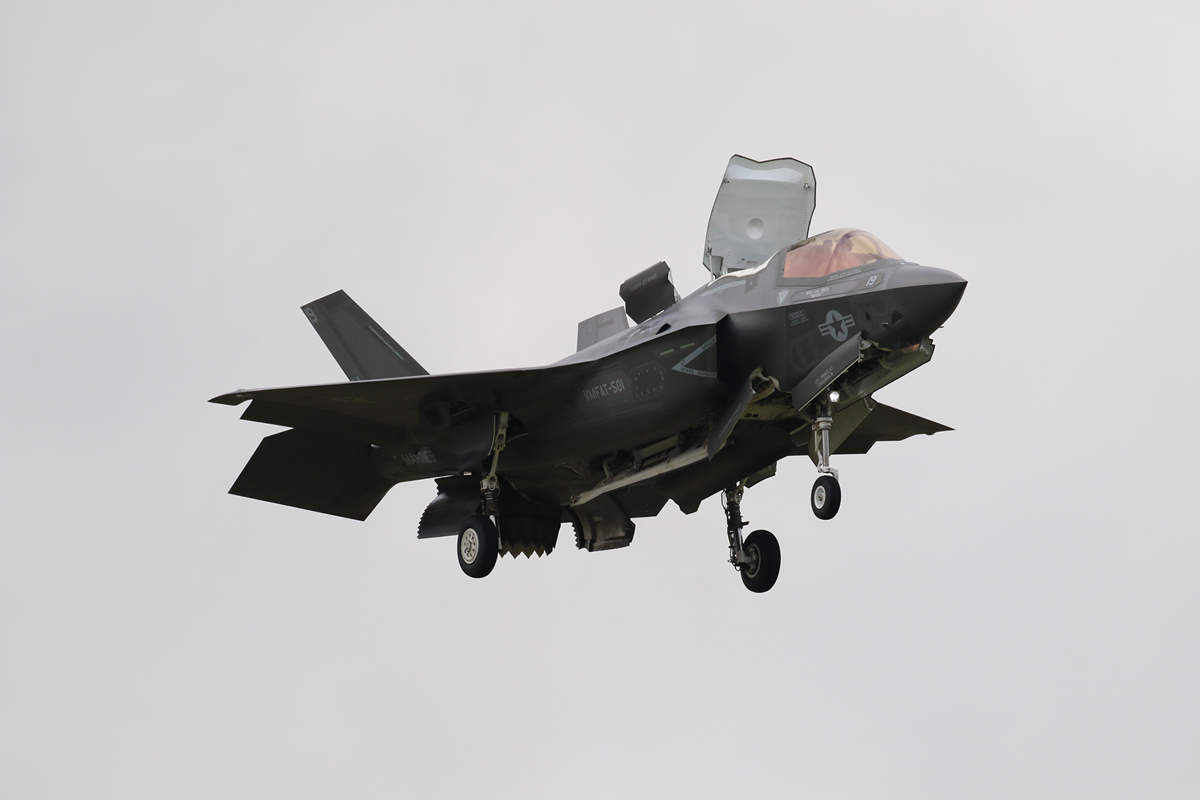

RIAT 2016 has been an opportunity to appreciate the strong standardization that pervades NATO countries; Typhoons were present in huge numbers, with aircraft from UK, Germany, Italy and Spain, then Belgian, Greek, Polish and Turkish F-16s and Swedish Gripens completed the display of the first line of most of the European air forces.
Luckily enough for all the enthusiasts attending the show, other jets were scheduled to fly; French Mirages and Rafale, Polish MiG-29 and a US Navy Super Hornet. All of them have performed at their best, competing for the several prizes assigned every year by the RIAT organization; the Typhoons always impress the crowd with the ability to perform remaining all the time inside a “box“ along the display line, but this year’s surprise has been the test aircraft brought to the show by BAE Systems which has executed awesome acrobatic maneuvers despite flying fully loaded with four Meteor and two ASRAAM missiles, two Brimstone 2 and two Paveway IV precision bombs! Such a memorable display has been awarded with the Steedman Display Sword for the Best Flying Demonstration by a UK Participant.
For sure, the French “detachment” has taken part to the Air Tattoo with a strong desire to leave a long-lasting memory; the Ramex Delta had chosen RIAT to be their last exhibition before ending their display activities (at least performed with the Mirage 2000N), winning two prizes, the RAFCTE Trophy for the Best Flying Demonstration by an Overseas Participant and the Best Paint Scheme Award. The Rafale pilot has been not less, leaving the British soil with the Paul Bowen Trophy for the Best Solo Jet Demonstration.
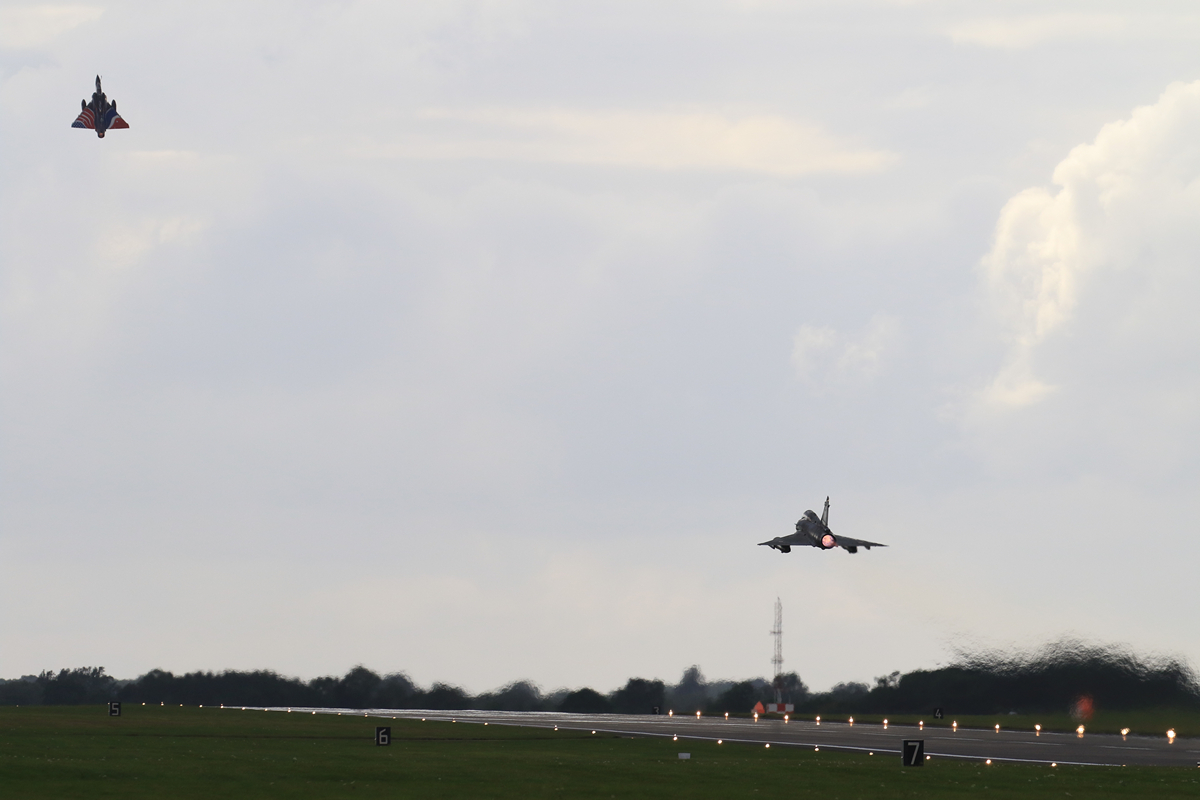
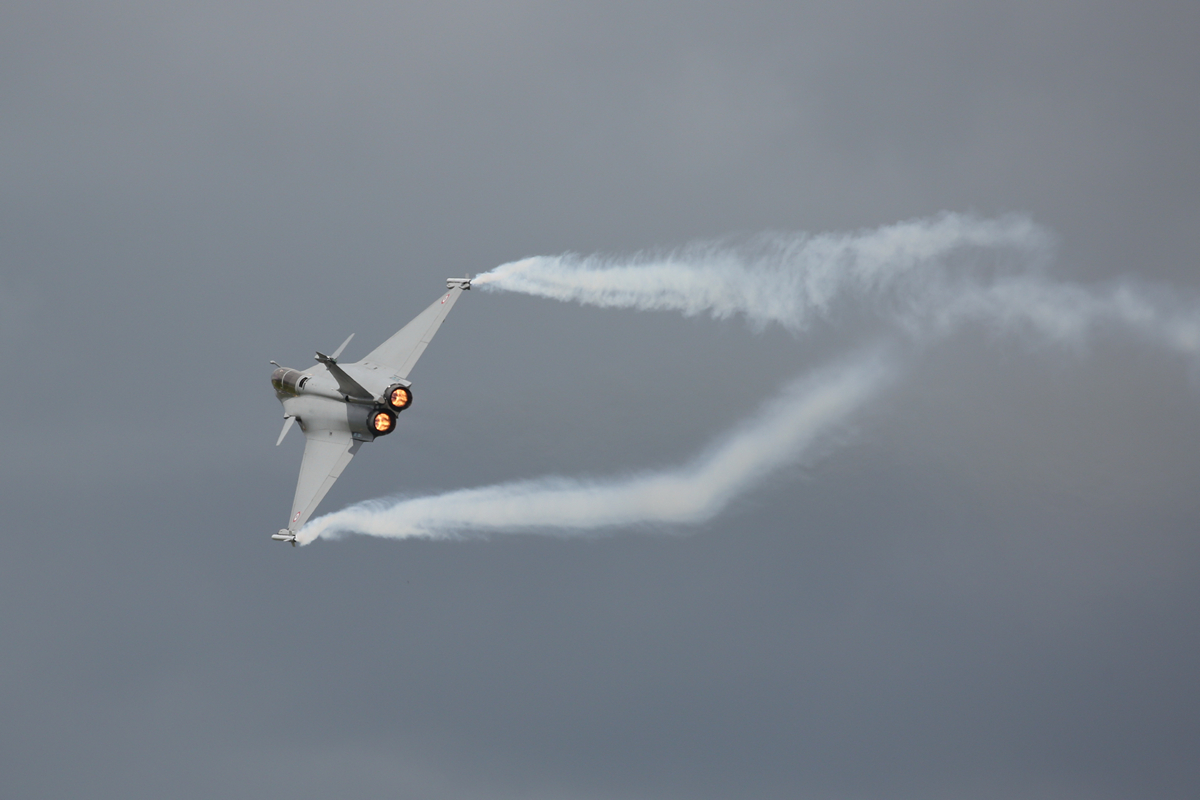
One category that usually delivers interesting surprises for the public is the “heavy” one; as already anticipated having as guests a RAAF KC-30, a RAF Voyager, a RNZAF B-757-22QC, a JASDF KC-767 and an USAFE KC-135R (plus a Turkish one landed on Monday) is not an everyday experience, especially if you have bought the ticket needed for Monday, departures day, that gives you the opportunity to take pictures of all these transports and tankers taking their way back home.
An increasing presence in the European airshow scene is the Airbus A400M; in Fairford there were three planes, two in the static exhibition (RAF and Luftwaffe) and the Airbus demo one. Believe it, the daily display of the A400M has always left everybody with their mouth wide open; the unsuspected agility of this massive plane (obviously helped from being unloaded) is simply astonishing. The demo always included a tactical landing, ramp opening, autonomous backtracking, followed by a take-off in order to resume the exhibition.
RIAT as always been a chance to meet lots of Hercules; transports are always precious assets tasked to daily missions, so this summer their presence shrank, but the few ones parked in Fairford were really a pleasure to see. The RJAF C-130H is a familiar sight (relations between Jordan and UK are well-established and long-lasting) as well as the Belgian one, the RAF C-130J C.5 (short fuselage) sported a celebrative tail, the USMC MC-130J Commando II (coming from RAF Mildenhall) has been subject of interest, but surely a really special one has been the Pakistan Air Force C-130E, with an interesting story to tell. The images painted on both sides of the tail celebrate Operation Zarb-e-Azb, launched in June 2014, whose goal was to crush the militant groups hiding in North Waziristan, along the border with Afghanistan; during this offensive, lasted over 18 months, PAF Hercules loitered over those territories looking for opportunity targets, designating them with the laser illuminator turret mounted under the nose in order to have the F-16s pounding them with LGB. The images wrapped around left side of the Herky fuselage show the soldiers and weapons involved in the operation, while on the right side the pictures illustrate show the initiatives undertaken in support of the liberated populations.
The CASA CN-235/295 family is another example of a market success easily seen in every European airshow; at RIAT there were airplanes from Ireland, Oman and Poland.

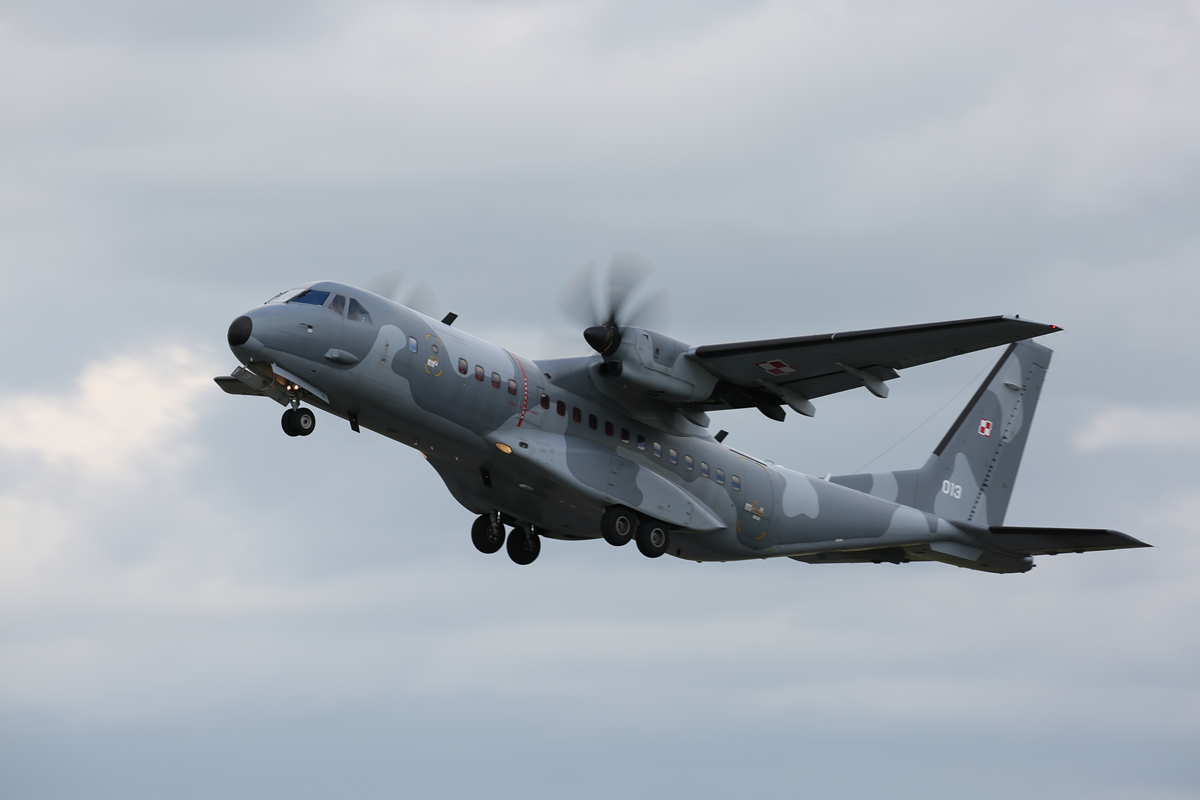
Also the maritime patrollers have been a meaningful presence at RIAT; the US Navy P-8A Poseidon has perhaps represented a sort of preview of the future RAF ones, while the RCAF CP-140 and the German Navy P-3C have reminded that the backbone of most NATO air forces in theme of maritime patrolling is still the Orion.
Other interesting representatives of this specialty have been one of the two Irish Air Corps Casa CN235-100, a Polish Navy PZL-10S Bryza-1R (painted in an all-white livery commemorating the Coastal Command during the Battle of the Atlantic) and a Dutch Coast Guard Dornier Do-228-212. A Norwegian Falcon DA20, whose main mission is electronic warfare, is often tasked for maritime surveillance, so can be included in this category.
An airshow implies aerobatics and obviously RIAT always hosts the exhibitions of several team; the Red Arrows are obviously in the list, while this edition has seen also the participation of Italian Frecce Tricolori, Polish Orlik Team (mounted on the PZL-130TC-2 Orlik), Croatian Krila Oluje (performing with 6 Pilatus PC-9M), Jordanian Falcons (flying the famous Extra EA300L) and the Patrouille Suisse. The Swiss team has shown their program flying only with four F-5E out of six; such reduction has been caused by the mid-air collision happened in Leeuwarden just a month before that resulted in the loss of an aircraft and a second one badly damaged. The Croatian team, a first at Fairford, has been rewarded with the King Hussein Memorial Sword for the Best Overall Flying Demonstration.
Aerobatics included also the exhibition of the Breitling Wingwalkers, in a new three-ships formation, and of the renowned world champion Aude Lemordant with her Extra 330SC.
Let’s close the review of the dynamic exhibitions speaking of the helicopter’s scene; RIAT 2016 will not only be remembered for a remarkable participation of rotary wings, but also in this sector there were some attractive displays. First of all, a farewell must be cited; the German Army MBB Bo 105P1 has performed for the last time, participating together with a special color parked at the static. The Dutch Boeing AH-64D Apache is often present in the European airshows, while British ones are a good chance to watch their Boeing Chinook HC.4 demonstrating an amazing maneuverability for an helicopter of such weight.
Another guest, absent from Fairford since a couple of years, has been the Royal Navy Black Cats Demo Team; having transitioned from two Westland Lynx HMA.8 to AgustaWestland Wildcat HMA.2, their display has focused on several carousels between the two helicopters. Last but not least the welcome exhibition of a USAF 352nd Special Operations Wing Bell CV-22, based at RAF Mildenhall, which has delighted the public with hi-speed passes and steady hoverings.
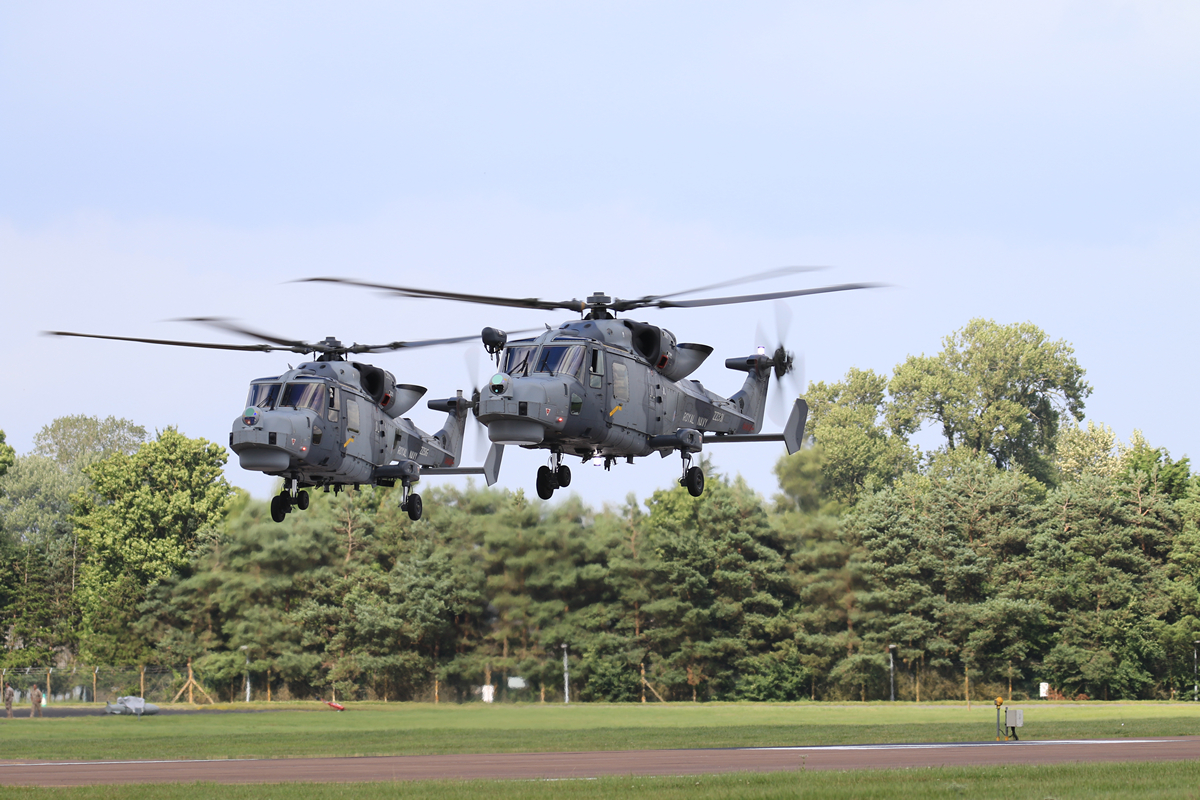
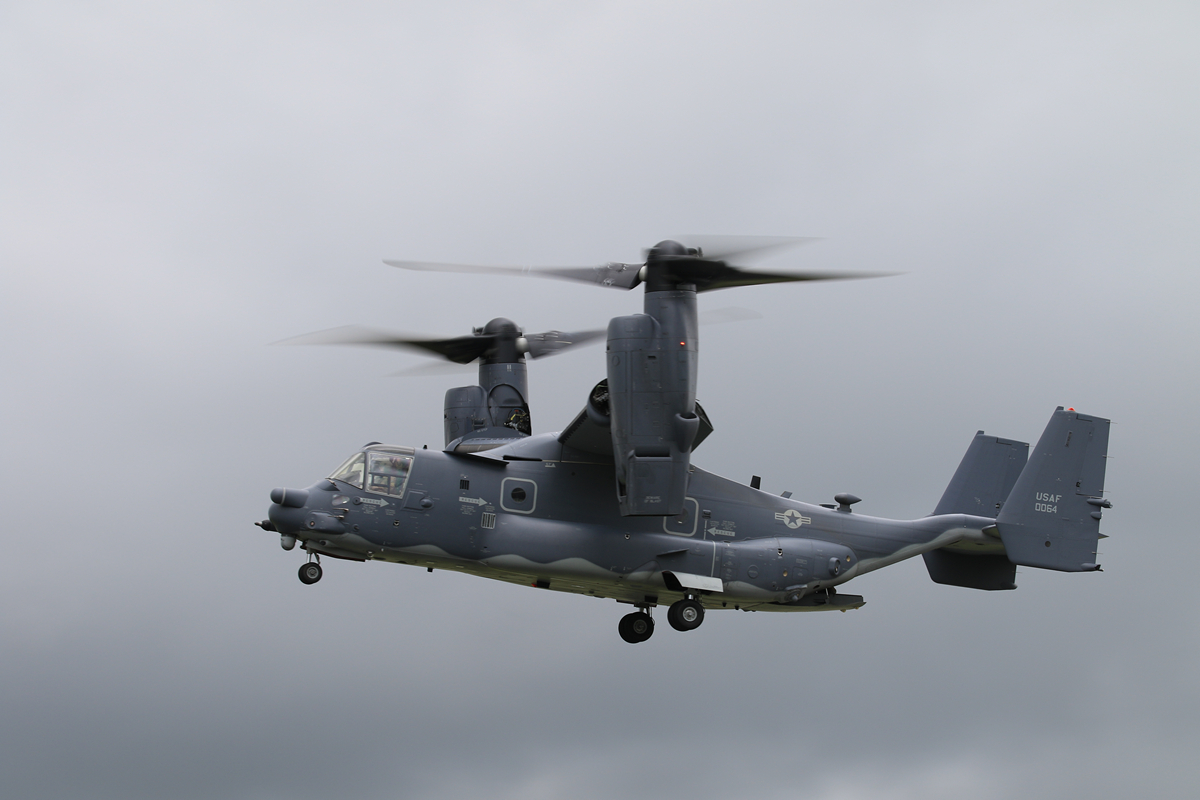
The static park showed several interesting aircraft. This year marked the 70th anniversary of the de Havilland Chipmunk, and so seven of them, one for each decade of the airplane’s life, formed a not easy to see line-up. Another star of the static has been the pair of Hellenic Air Force F-4E AUP (Avionic Update Programme); leaving the show on Monday morning their pilot asked permission for a goodbye pass but the tower had to deny it due to the tight take-off schedule.
BAE Systems brought to the static an Avro Anson C.19, while the Hawker Hunter Aviation Ltd (a company operating as a red air force contractor) has been present in the static display, also briefly performing in the dynamic program.
Britten-Norman took part with two models, a civilian one, a BN-2T Islander, and its military variant, the BN-2T Defender. Another usual guest, but worth a citation, is the privately-owned Piaggio R166C, restored to airworthiness by her owners, the Italian enthusiast group I Fenicotteri (The Flamingos), in 2011.
For the third year Textron exhibited its new product, the Scorpion, a low-cost tactical aircraft, still in search of a first client. It will probably take part in the T-X program (the new USAF advanced trainer) but other competitors seem to be better equipped to win the selection. The American company brought also a Cessna Caravan 208, a single-turboprop often sold for civilian purposes, now launched in the military role, particularly tailored for special missions.
The Swedish Gripen was exhibited with an impressive array of new weapons; under the pylons could be seen eight GBU-39 SDB and two Meteor missiles, while near the airplane was shown a new A/S RB15F missile and a GBU-49 Enhanced Paveway II. The ability to use these new payloads will be enabled by the next software upgrade, MS20, which will be retrofitted to the whole C/D models in service. Writing about Gripens it is fair to say that the Swedish JAS-39C taking part in the dynamic display has won the Sir Douglas Bader Trophy for the Best Individual Flying Demonstration.
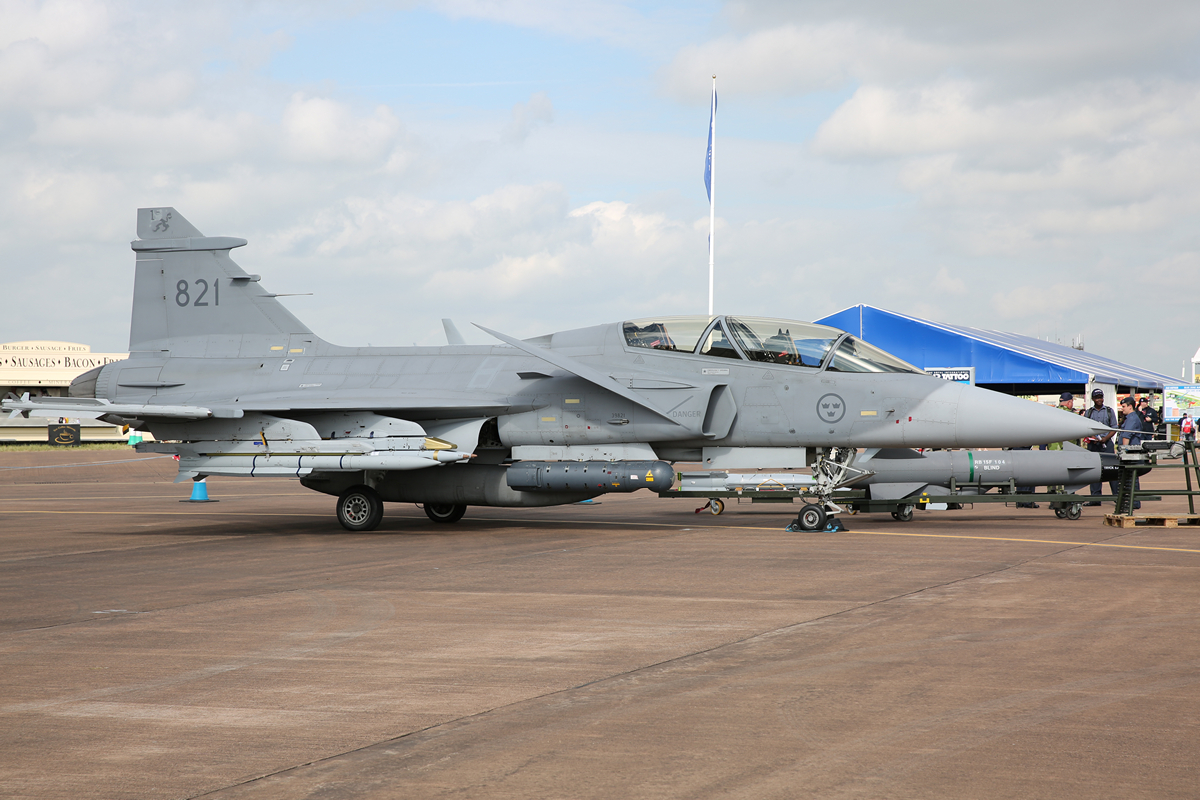
Monday morning is, according to many, the day not to miss; every plane take off to return home, and so this is an unique chance to take pictures of those ones which spent all the time parked at the static. In a few hours the show is ended but, English weather permitting, it’s difficult not to admit to be satisfied with such an aviation parade. One of next year’s themes will be the USAF 70th anniversary, so crossing the Pond to join the crowd of enthusiasts should be an option seriously to consider!
Lockheed Martin Media Day
On Thursday, July 7th we had the chance to attend the Lockheed Martin F-35 Briefing, held in the LM hospitality “tent” in Fairford. It has been an interesting opportunity to listen directly from the F-35 instructor pilots their personal view on the controversial fifth-gen aircraft; obviously enough only appreciative words have been told from everyone involved in this event, but the satisfaction expressed by the pilots and, later in the afternoon, by the Air Combat Command Commander, General Herbert ‘Hawk’ Carlisle, seemed to be really sincere.

The four pilots who alternated on stage represented a well-assorted sample of the different backgrounds, expectations and experiences of the Air Forces they belong to; perhaps the most persuasive declaration of satisfaction has come from Royal Norwegian Air Force Lt Col Martin ‘Tintin’ Tesli, who has stressed the trepidation with which Norway is waiting to enter the airplane in service. One aspect particularly important for his country’s Air Force (let’s keep in mind their peculiar average weather conditions and operational environment) is a true all-weather sensor capability, which will enable RNoAF to defend Norway borders intercepting every aircraft approaching national airspace and deciding whether to stay invisible or not.
Lt Col Richard ‘BC’ Rusnok, USMC, VMX-1, Edwards, California, stressed the importance of a current phase of tests regarding rapid redeployments on forward basis (and this transatlantic trip has been an important confirmation of a such capability), while Maj Will Andreotta (USAF F-35A Lightning II Heritage Flight Team Commander and pilot, 56th FW, Luke, Arizona) and Lt Cdr Adam Hogg (Royal Navy, currently at MCAS Beaufort and designed to become the Executive Officer of 617 Sqn ‘Dambusters’, the first British unit scheduled to receive the F-35Bs) have remarked the interoperability that this jet will allow in the NATO countries. Pilots and instructors currently operating from Luke fly every day indifferently on US, Italian, Australian and Norwegian airplanes, and if an aircraft is not serviceable the pilot gets on the spare plane, plug the mission cartridge in and is ready for take-off. The same applies for the ground crews, who works jointly on this assorted flight line.
Two game-changing features, often cited during the morning session, are the sensor fusion and, needless to say, stealthness. The first capability is really a key factor enabling the pilot to focus mainly on the mission instead of flying the plane; each pilot can configure the cockpit screen according to personal preferences (and this customization is saved in the pilot’s profile, so flying on a spare doesn’t need any reconfiguration), and having a complete situational awareness without having to worry about which sensors are contributing to provide it is a true workload relief. Stealthness is one of the pillars of the F-35 project and it really works; as one of the pilots said, “You start to believe in stealthness when you fight against a stealth plane”. The competitive edge that these capabilities give to the pilot means also that the 7g limitations of B and C models compared to F-35A (which can sustain 9g maneuvers) is not considered to be a real problem.
Outside the LM chalet was displayed a mock-up of a British F-35 and its engine, complete with the lift fan, swivel duct and roll nozzles. MBDA brought an ASRAAM and a Meteor missiles and the new SPEAR, a stand-off precision strike weapon, planned to be integrated starting from Block 3 (ASRAAM) and Block 4.
Inside the chalet it was possible to give a glance to a cockpit simulator and to a model of the next British carrier, the Queen Elizabeth class, which will start the sea trials in early 2017. We had also the chance to wear the new helmet and, as widely known, it really weighs! The example brought to the media day differs from the operational ones surely for the internal shape; every pilot has a perfectly head-fitting helmet, thanks to a 3-D scan, followed a laser cutting process (it takes over two days to complete this job). Such precision is required in order to have a perfect alignment of the pilot’s pupils with the display visor where, like a virtual HUD, all the necessary info are shown. According to the Rockwell-Collins guy (the helmet is develop jointly with the Israelian company Elbit) most of the previous issues, like the image latency, are resolved; the weight reduction process is going on and soon the pilot’s weight restriction, necessary to cope with ejection issues, could be lifted. The apiece price is not exactly a palatable one ($ 400k), but, aside the new advanced features, must be told that there is no HUD to buy.
Closing this interesting media day we had to pleasure to listen to General Carlisle’s speech; he heartily declared his full satisfaction with the F-35A test plan progress and with the new capabilities that the Lightning II will bring to the USAF. According to his own words, the F-35 “really changes the fight”; among the game-changing features he cited the impressive penetration capabilities, combined with an increased survivability in non permissive environments, the ability to defend other assets and to share the unique situational awareness obtained thanks to the advanced sensor fusion and the maintainability that allows high missions availability rates. Asked about his opinion about F-22 production line restart, he stated that, notwithstanding the exceptional performance of the Raptor, he’d prefer to invest that hypothetical funds in accelerating the F-35 production rate.
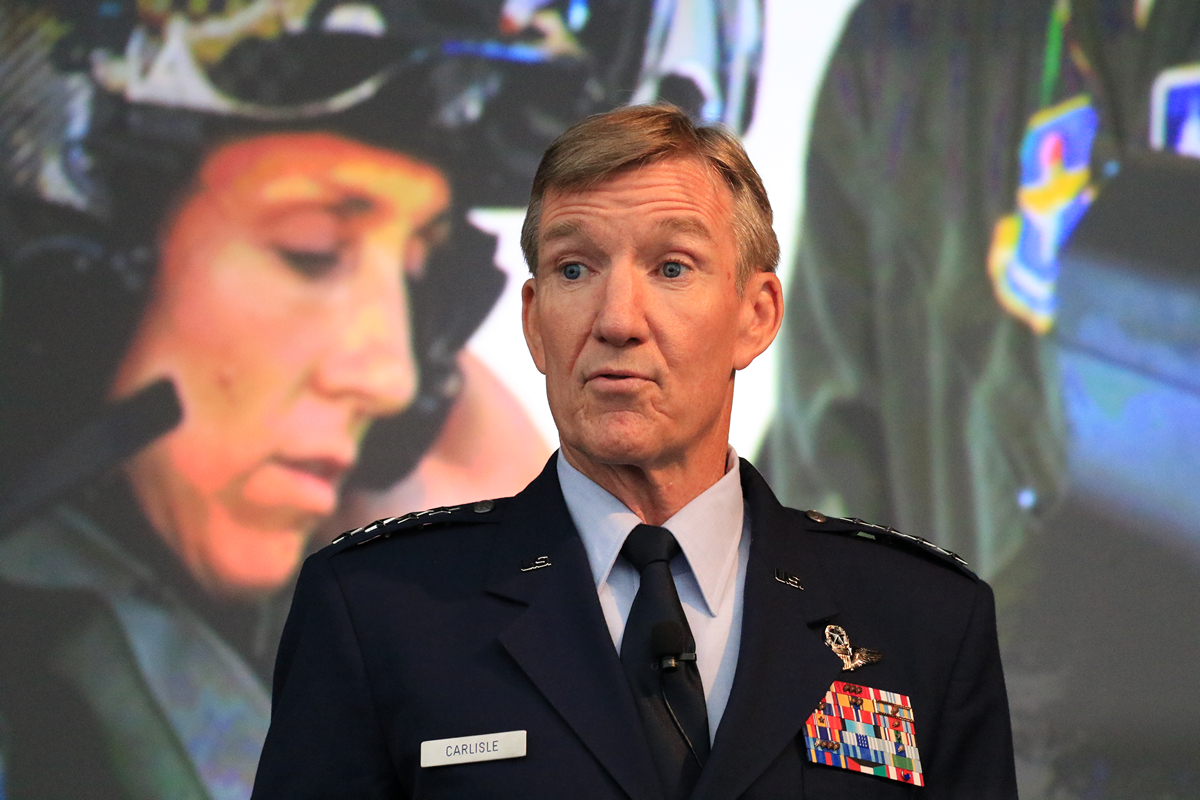
Hopefully the F-35 will become a regular guest at the Air Tattoo, so we are looking forward to next summer in order to evaluate the achievements that this innovative airplane will have reached in yet another year of intense activities.
RIAT 2016 Gallery
Click on an image below to page or swipe through the gallery:
Gabriele was born in Turin, Italy, grew up in Sicily and now lives in Rome. His love for aviation goes back to the days when he was seven years old, he started to collect the ‘History of Aviation’ sold weekly at the nearby newsstand. With that, he realized that his goal was to become a military pilot. This dream met a harsh reality when, during the medical tests, a defect in his chromatic sense of sight was discovered.
His interest in photography arose a few years later, when he bought from a colleague his first single-lens reflex camera, a Pentax ME Super. Then everyday life took its toll; working as an IT analyst, studying for an MD in political science and starting a family left no time for enjoying his old interest for aviation. One day in 2008, he decided to revive the passion, starting again to take pictures of aircraft each time he has a chance. Now, using Canon gear, he is striving to become a photojournalist.
Gabriele can be reached at: [email protected]


